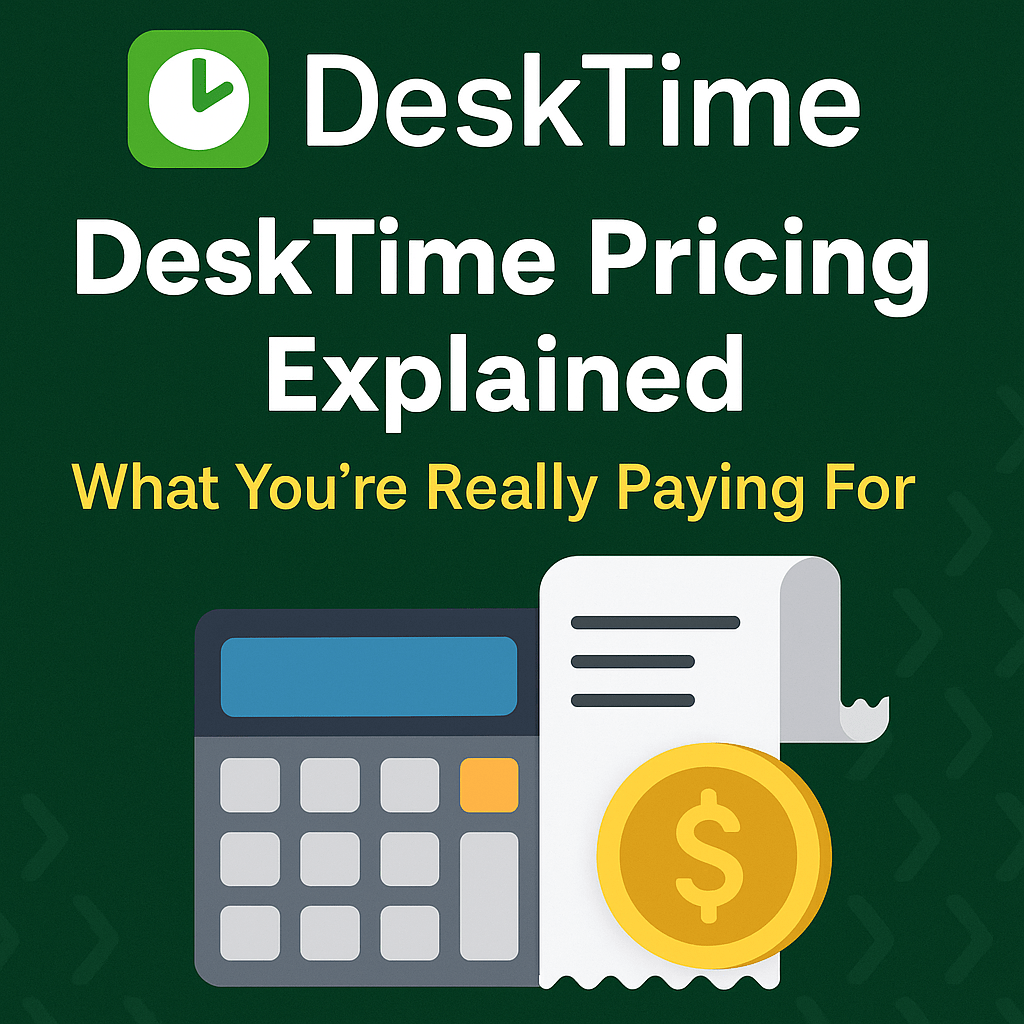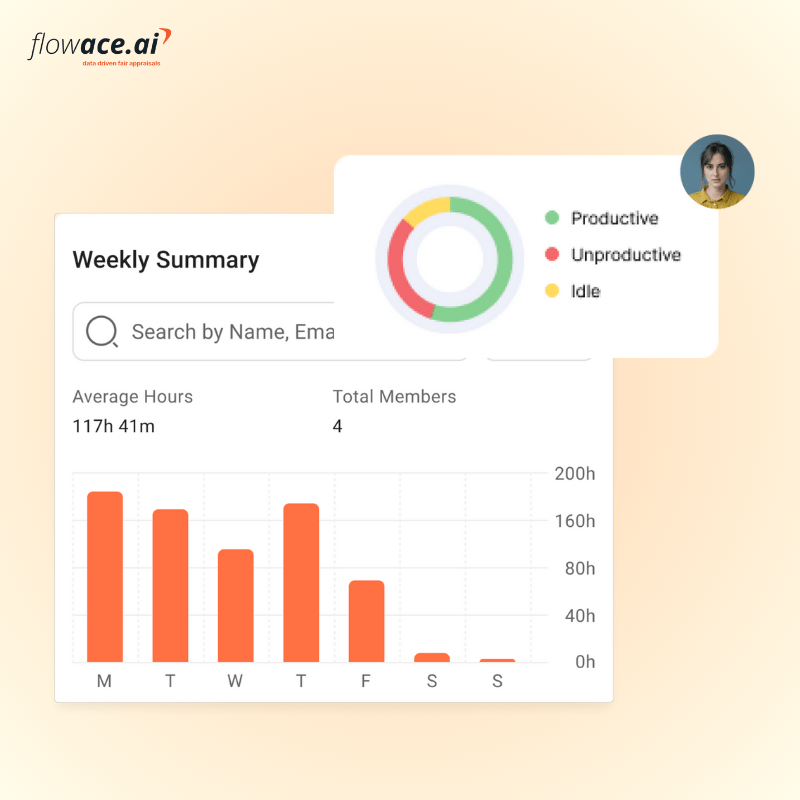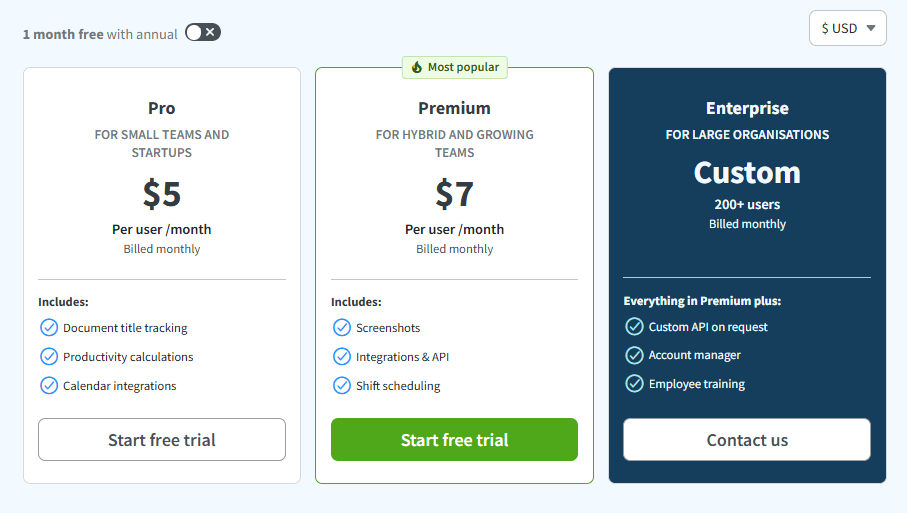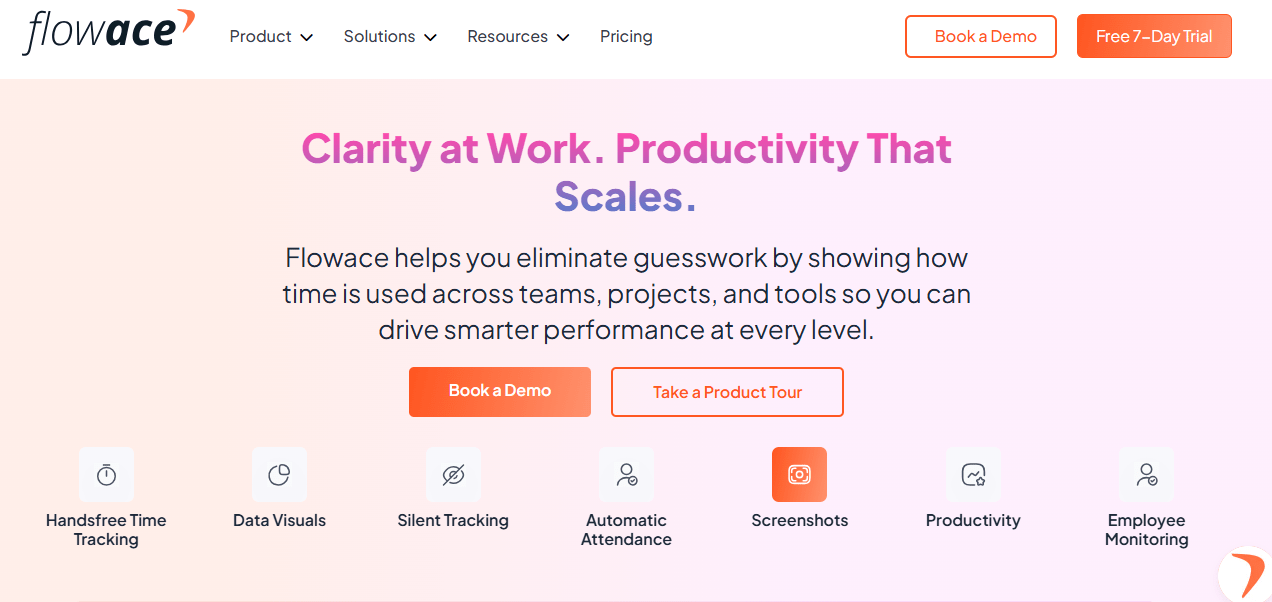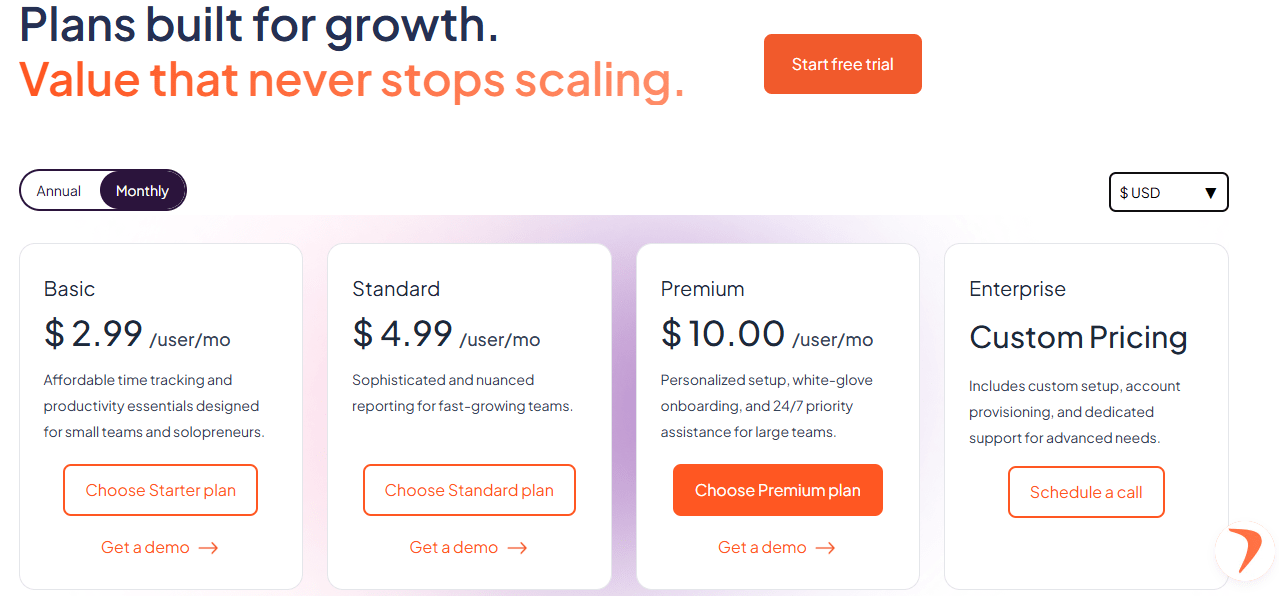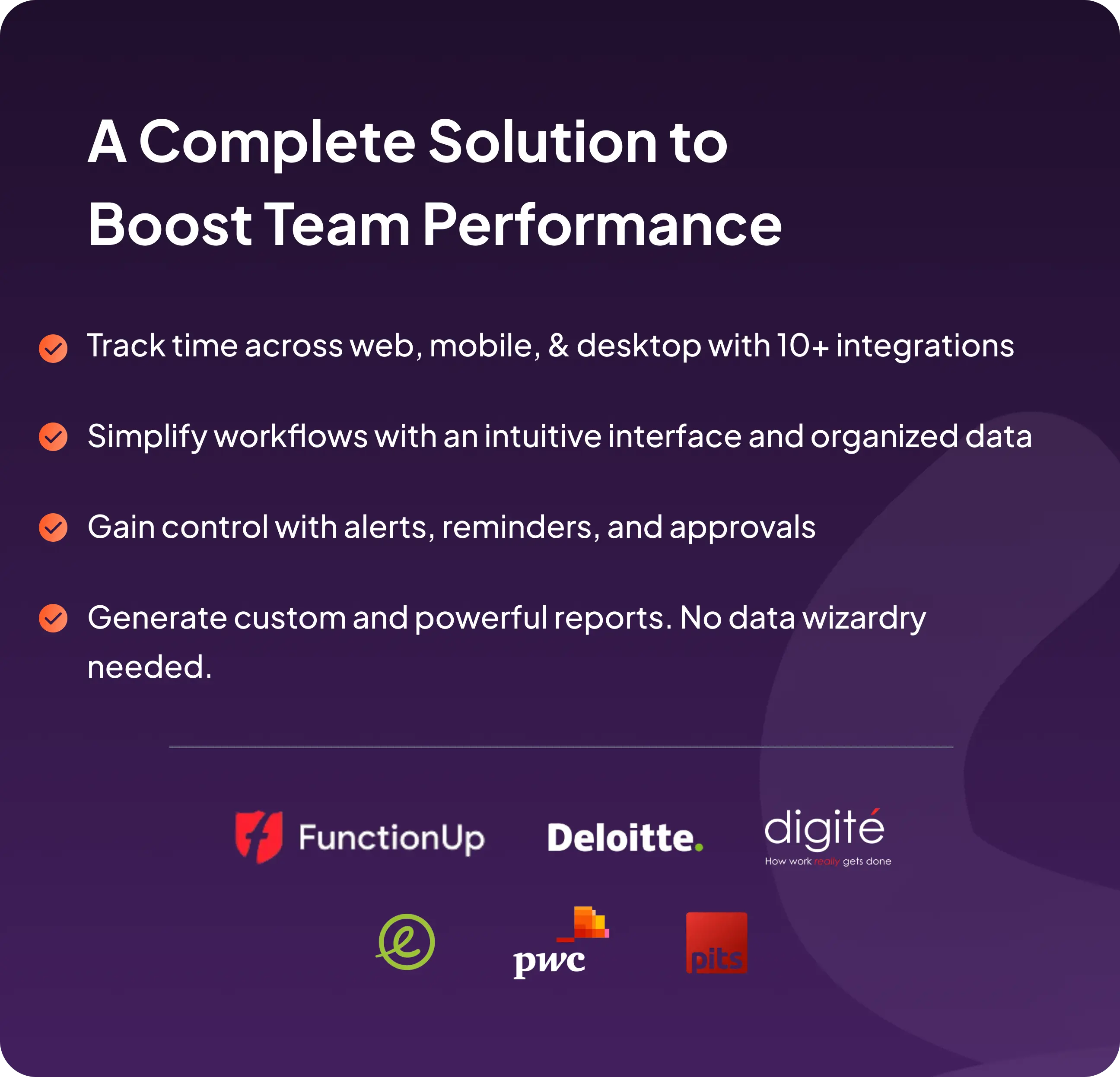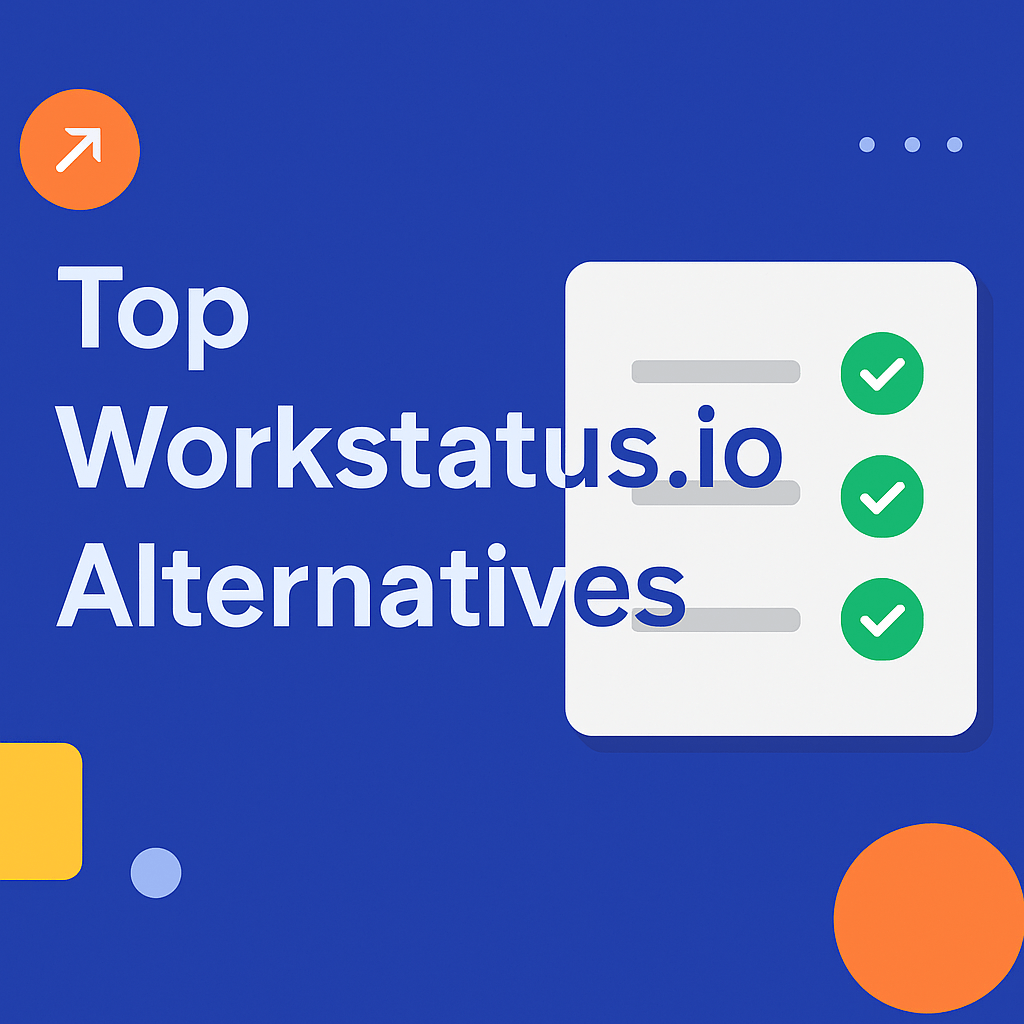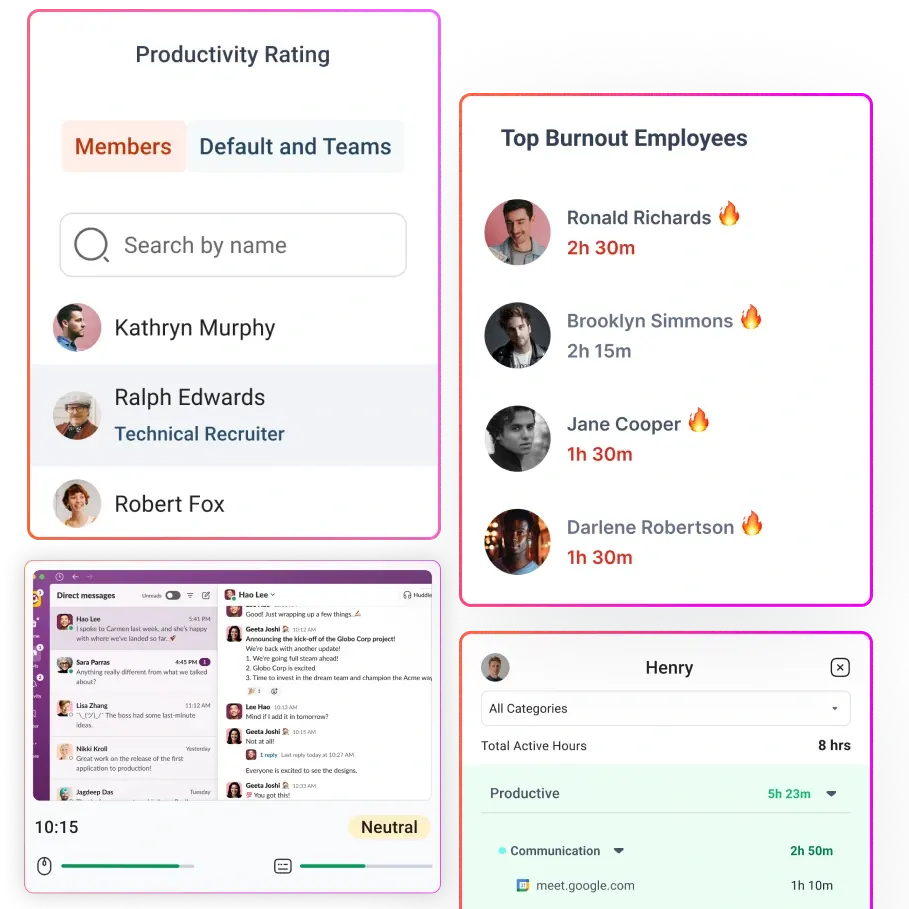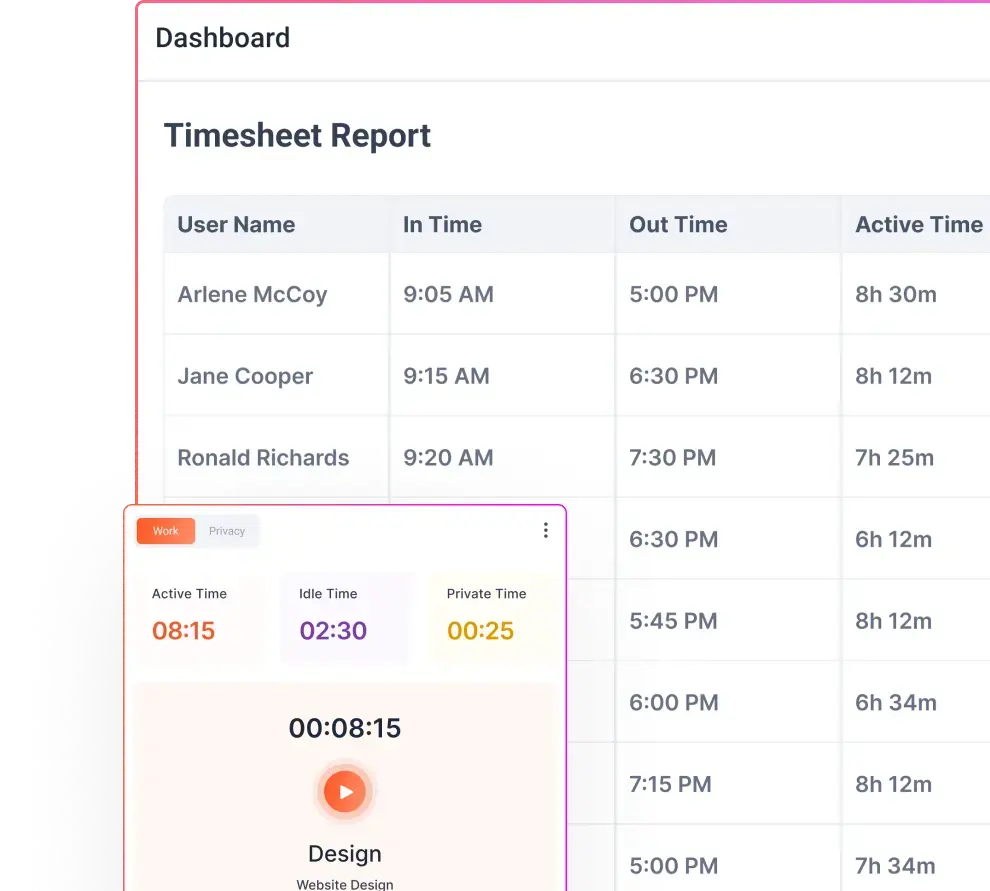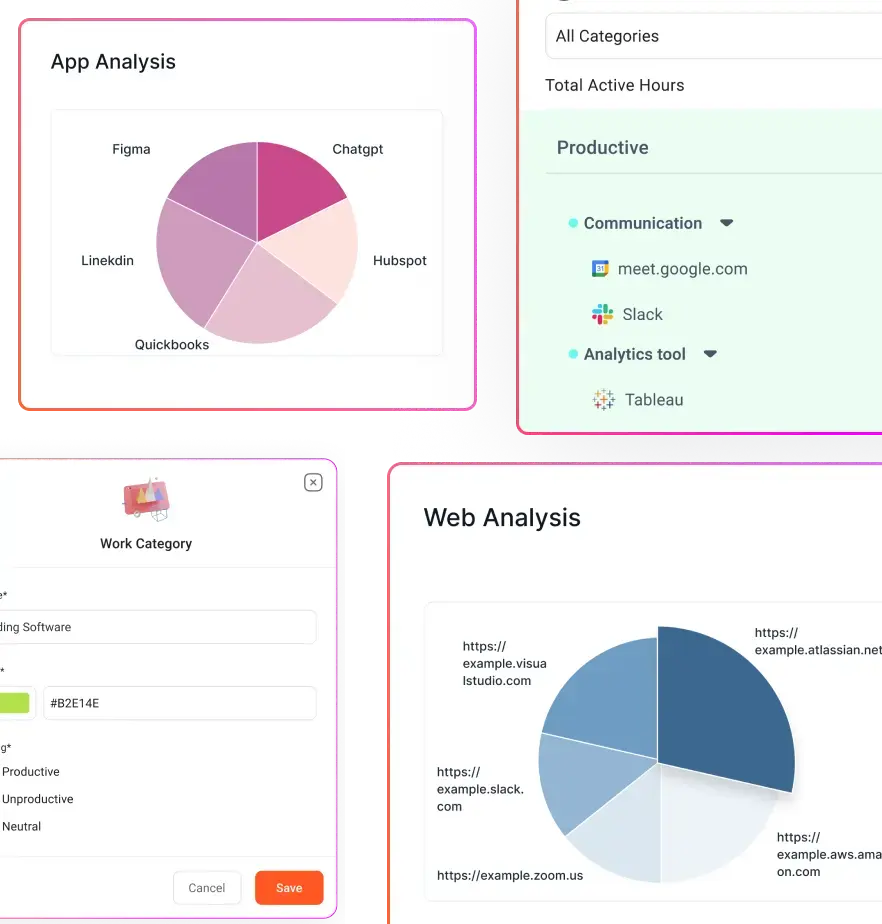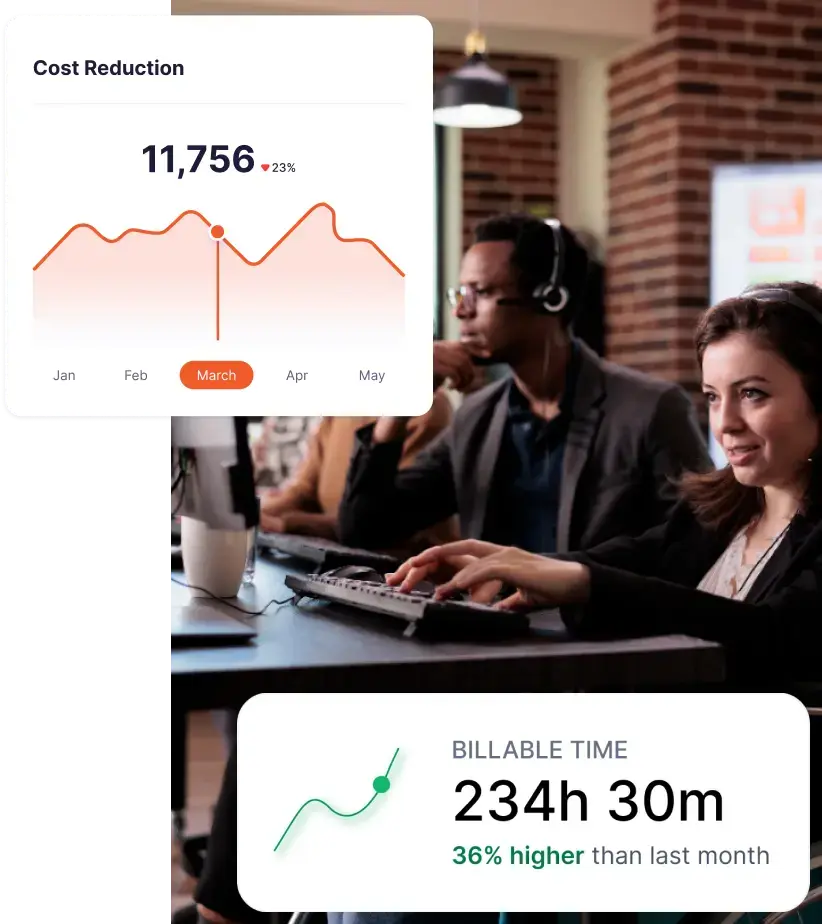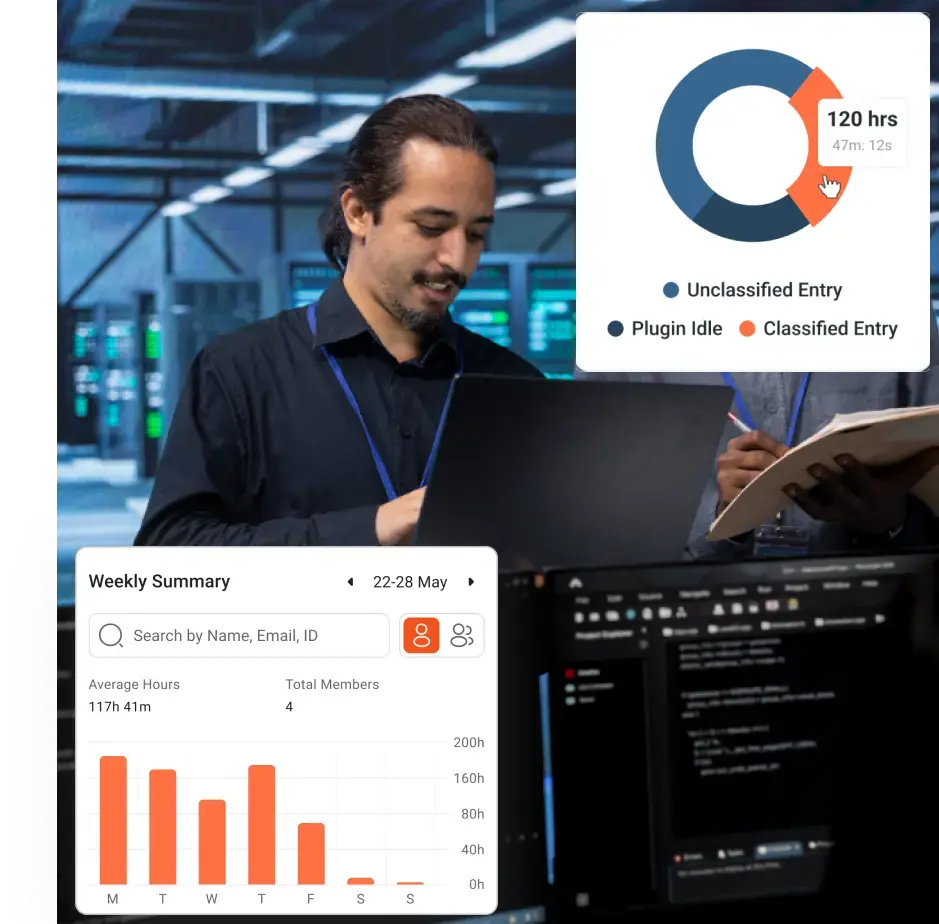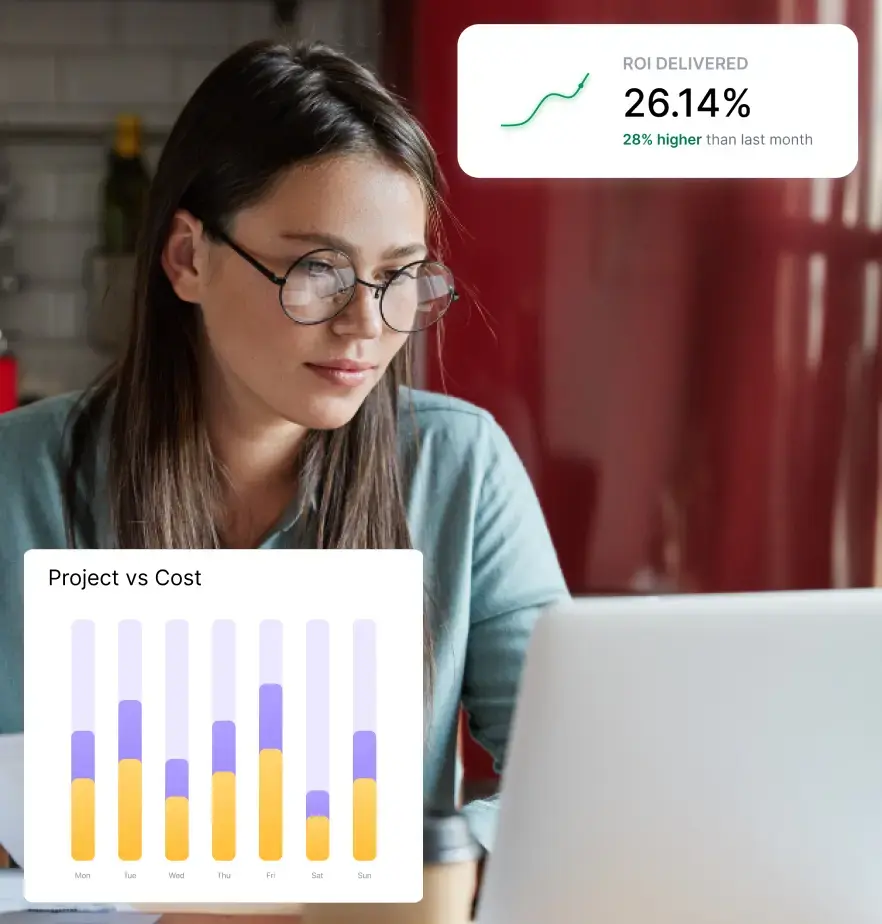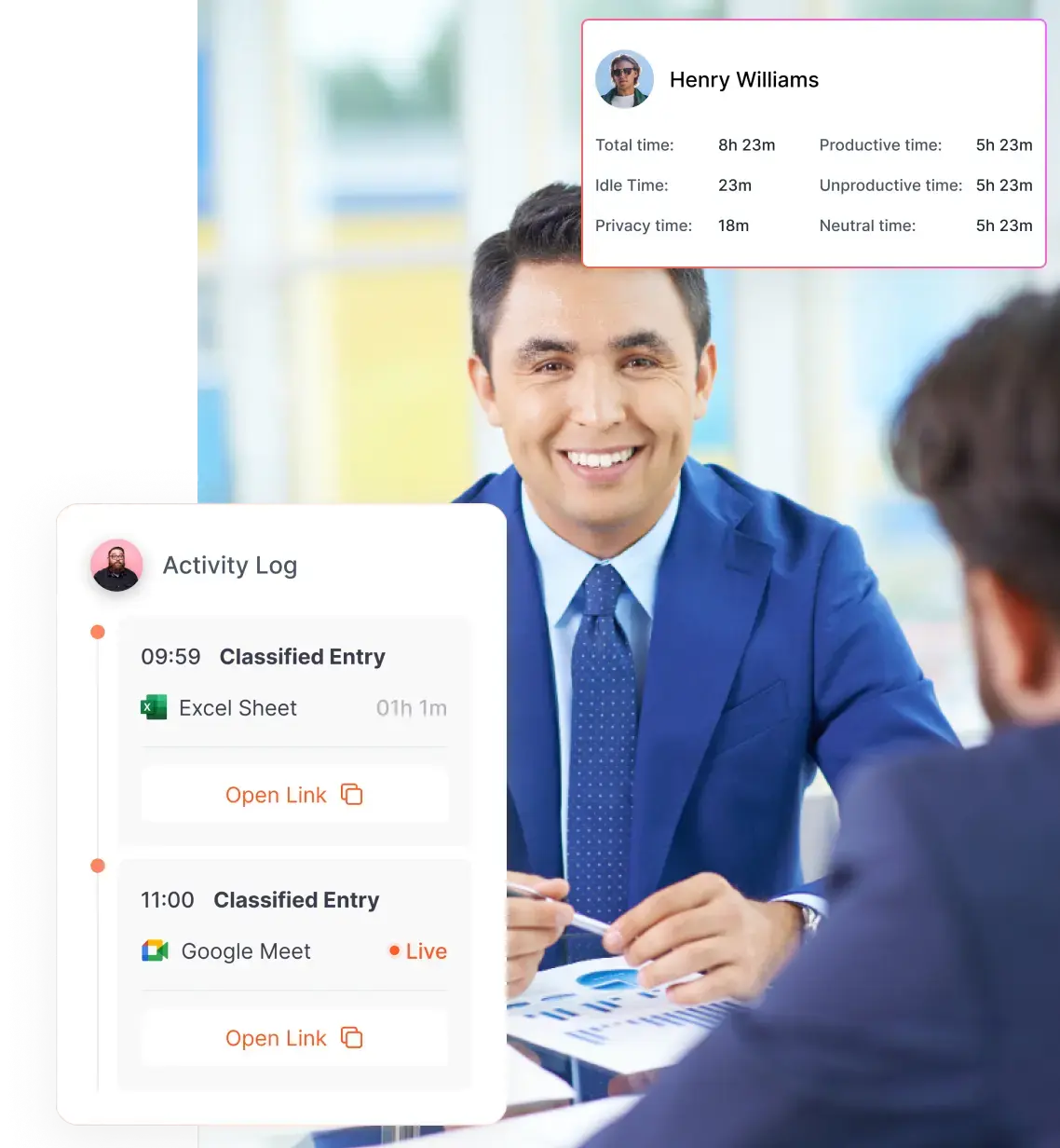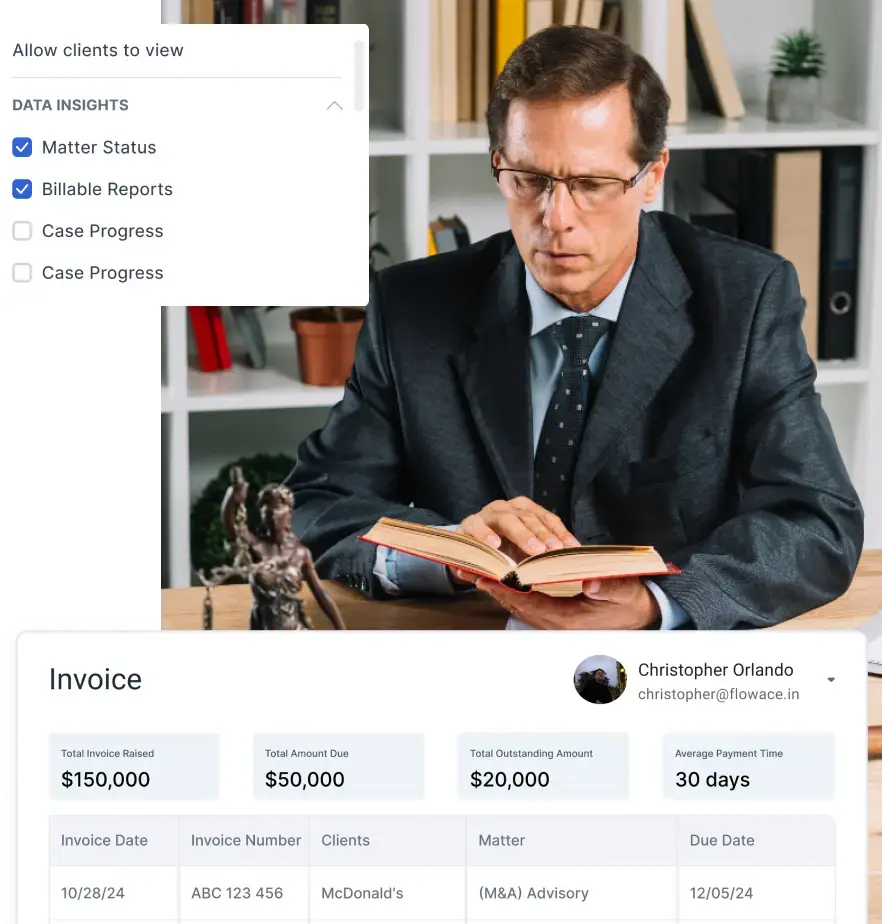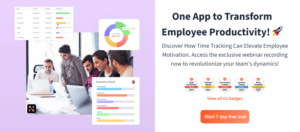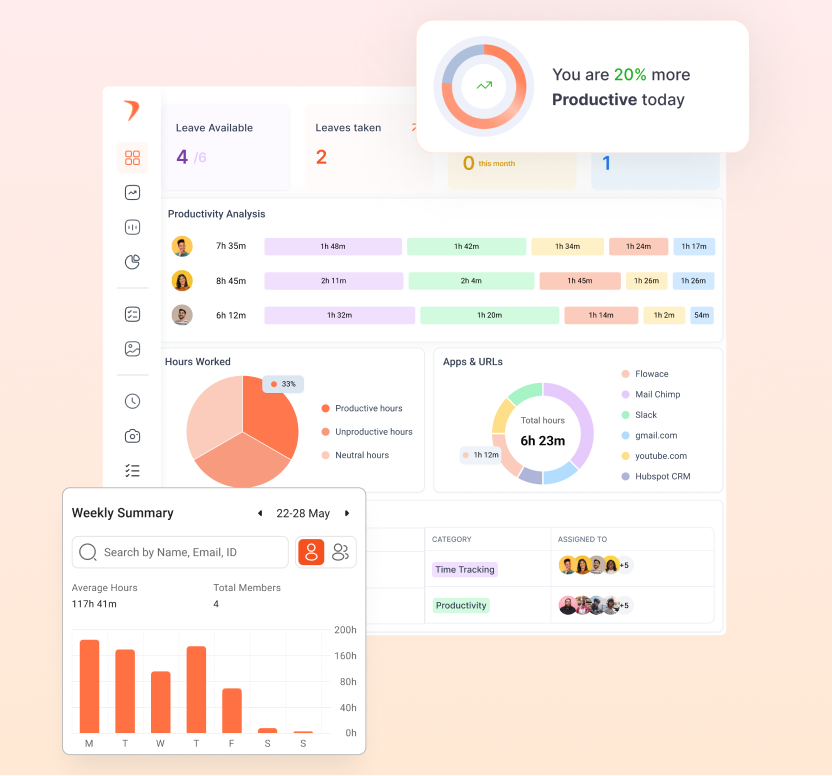Key Takeaways
- DeskTime suits digital and remote teams: It’s ideal for knowledge workers, IT teams, and remote setups needing automatic time tracking, productivity analysis, and integrations with tools like Jira and GitLab.
- DeskTime pricing scales quickly: Starting at $5/user/month (Pro) and $7/user/month (Premium), DeskTime’s costs can rise fast as your team grows since advanced features—like screenshots and shift management—are locked behind higher tiers.
- Flowace offers more for less: With plans starting at $2.99/user/month, Flowace includes features like automatic tracking, unlimited projects, screenshots, and productivity analytics even in its Basic plan.
- AI-driven analytics make Flowace smarter: Unlike DeskTime’s basic productivity percentages, Flowace uses AI to deliver detailed insights, work-life balance metrics, and focus/distract patterns.
- Flexible pricing fits all team sizes: From small businesses to enterprises, Flowace’s pricing remains affordable, scalable, and customizable—without hidden add-ons or feature paywalls.
- Best value for growing teams: While DeskTime is reliable, Flowace delivers a better cost-to-feature ratio, helping teams cut software costs by up to 40–50% while gaining advanced functionality and detailed reporting. Try the 7-day free trial or book a demo to see how Flowace saves both time and money.
You are looking at your team, your billables, and your payroll. You want a time tracking tool that gives you clean data, accurate timesheets, and real visibility into how work gets done. And you want all of that without burning your budget or irritating your team.
Here is the problem.
Many time tracking tools look affordable at first. Then you realise key features like automatic time tracking, screenshots, shift scheduling, or in depth reports only live in higher plans. You upgrade for one feature. Your per user cost climbs. Suddenly your “simple” employee productivity tool is one of the biggest line items in your SaaS stack.
If you pick the wrong tool, you can end up with:
-
Missed billables and revenue leakage
-
Time theft and inflated hours
-
Frustrated employees who feel watched instead of supported
-
Finance teams stuck reconciling messy timesheets
-
Compliance teams with no solid audit trail
Now the good news.
In this guide, I will walk you through DeskTime pricing, what each plan actually includes, and where the real cost sits as your team grows. Then I will compare it with Flowace, an AI powered time tracking and employee productivity tool that often delivers more features for less money.
We’ll see why many users looking for an affordable time tracking software comparison end up viewing Flowace as the best DeskTime alternative when it comes to value and insights.
What Is DeskTime?
DeskTime is an automatic time tracking and employee productivity tool built for digital and remote teams. It runs in the background and tracks apps, websites, document titles, and work time so you can see how your team spends their day.
Managers use DeskTime to:
-
Track working hours and attendance
-
Measure productive vs unproductive activity
-
See which projects and tasks take the most time
-
Capture screenshots for proof of work
-
Plan shifts and manage absences
Quick Recap of DeskTime Pricing Plan
DeskTime offers a tiered pricing model based on the number of users and the features required. The pricing is per user per month, with discounts available for annual billing. There are four main plans: Pro, Premium, and Enterprise (custom pricing). Each plan is designed to meet the needs of different team sizes and business requirements.
- Lite (Free): Best for freelancers and individuals who want basic time tracking and productivity stats.
- Pro ($5/user/month): Ideal for small teams that need more control, reporting, and project tracking.
- Premium ($7/user/month): Perfect for growing teams or those with remote/hybrid workers who need advanced monitoring features.
- Enterprise (Custom): Best for large companies needing unlimited data, personalized support, and advanced customization.
- Annual Discounts: DeskTime offers a discount if you choose annual billing. By paying yearly, you get one month free. This brings the effective monthly price down to about $5.04 for Pro and $6.96 for Premium.
As your team grows, DeskTime’s pricing can scale quickly. Since the cost is per user, you may start to notice the expenses adding up, especially if you need to upgrade to higher tiers for advanced features. DeskTime pricing can become a concern as team size increases. For some businesses, this is when they start looking for alternatives that may offer better pricing or more features for the same cost.
Meet Flowace: The Best Automated Time Tracking Solution
If DeskTime pricing feels steep as your team scales, Flowace is an AI-powered time tracking tool and productivity platform that is a cost-effective, feature-rich alternative to DeskTime. Here’s a quick look at what Flowace brings to the table:
Fully Automated Time Tracking
Like DeskTime, Flowace automatically tracks computer usage, apps, websites, and idle time—without you needing to start or stop timers. It runs in the background, logging activities and filling in timesheets automatically. No more worrying about forgetting to log hours.
AI-Driven Productivity Insights
Flowace doesn’t just track time; it analyzes it. Using AI, it identifies productivity patterns and gives suggestions for smarter work habits. It can alert you when you’re most focused or when someone’s getting distracted, like having a built-in productivity analyst.
Project & Task Management Integration
Flowace stands out with its flexible project/task structure. Most tools, including DeskTime, offer a simple two-level hierarchy (project > task). Flowace, however, lets you go as deep as you need, supporting unlimited levels, like Client > Project > Task > Sub-task. This is perfect for teams that need detailed time tracking at multiple levels.
Deep Workforce Insights & Reports
Flowace provides advanced reporting, including project-based reports, productivity metrics, and even work-life balance insights. It tracks both productive and non-productive activities and sends daily or real-time email notifications about team activity. It’s not just about logging time; it’s about understanding how time is spent.
Integrations & Workflow
Flowace integrates with a wide range of apps, including Jira, Salesforce, Azure DevOps, and Asana. This means it syncs seamlessly with your existing workflow, whether you’re using project management tools or other business apps. For example, with Jira integration, Flowace can map time entries to specific tasks.
In short, Flowace gives you a detailed, automated view of how your team works, making it an ideal choice for teams that need more than just basic time tracking. It helps with tracking employee productivity with minimal effort.
Flowace Pricing Plans and What You Get
Flowace keeps things fairly straightforward with three main plans: Basic, Standard, and Premium. All plans come with a free 7-day trial (so you can test any tier with full features).
Flowace Basic
Flowace’s Basic plan is a great entry-level option, especially if you’re looking for value at $2.99 per user per month. If you opt for annual billing, you’ll get a ~33% discount.
The Basic plan includes unlimited users, so you can add as many people as you need. It also covers all the core time tracking features:
- Unlimited Projects & Tasks: You’re not limited in how many projects or tasks you can track time against.
- Unlimited Screenshots: Unlike DeskTime, Flowace gives you screenshots even in the Basic plan, which can be a great accountability tool.
- Automatic Tracking: Flowace silently tracks your activity, including apps, websites, and idle time, on your desktop—no manual timers needed.
- Basic Reports & Dashboards: You get simple productivity reports, along with individual and team dashboards to track progress.
- Work-Life Balance Metrics: Flowace tracks your hours worked vs. break times to help you manage your workload and prevent burnout.
The Basic plan covers everything you need for time tracking and basic monitoring, making it a solid choice for small teams or solo users. It’s like a mix of DeskTime’s Lite and Pro features but with the bonus of screenshots—at a fraction of DeskTime pricing.
Flowace Standard
Flowace’s Standard plan is priced at about $4.99 per user per month. It’s Flowace’s middle tier, similar to DeskTime’s Premium plan.
The Standard plan includes everything in the Basic plan, plus some powerful upgrades:
- Productivity Ratings: This feature automatically classifies activities as productive or not and scores employees based on their work. It’s similar to DeskTime’s productivity percentage but more customizable.
- Break Tracking & Inactivity Alerts: Flowace can notify you if someone has been away from their keyboard for too long, ensuring employees are staying on task.
- 10+ Integrations: You can integrate Flowace with tools like Jira, Asana, GitLab, and more. This makes it easier to sync your data directly between platforms, which the Basic plan doesn’t offer.
- Web & App Usage Reports: Get detailed reports on which websites and apps took up your team’s time. It’s a great way to see where time is being spent and optimize for employee productivity.
- Daily & Real-Time Email Notifications: You’ll get updates on your team’s hours, plus instant alerts for certain events, so you’re always in the loop.
- Sessions with a Product Specialist: These are included for onboarding, helping your team get up to speed with Flowace’s features.
For most companies, Standard is the sweet spot. You get advanced tracking, integrations, and reporting at about half the cost of DeskTime’s Pro plan, making it a powerful option if DeskTime pricing is a limiting factor.. At just ~$5 per user, it offers a lot of features for a reasonable price.
Flowace Premium
Flowace’s Premium plan is the top-tier option, priced at around $7 per user per month. This plan includes everything in Standard, plus a bunch of powerful features.
- Client Login Access: You can give clients access to certain dashboards or reports. This is especially useful for agencies or BPOs that want to show clients how time is spent on their projects.
- Executive Dashboard: This gives senior management a high-level view of company-wide productivity at a glance. It’s perfect for keeping track of overall performance.
- Automatic User Provisioning: This feature makes it easier to add or remove users, which is great for large teams or companies with directories.
- Dedicated Account Manager: With Premium, you get priority support from Flowace’s team to help with any issues.
- Internet Connectivity Reporting: This tracks if a user’s device loses internet connection, which could indicate offline work or potential issues.
- Keyboard and Mouse Activity Monitoring: You can track active vs. idle time more precisely by monitoring keystrokes and mouse activity, giving you a better sense of productivity.
- Longer Data Retention: Premium offers 18 months of historical data retention. This is a big plus compared to DeskTime’s Enterprise plan, which only offers unlimited history at a much higher price point.
Flowace Custom Pricing
Flowace offers a custom Enterprise pricing plan tailored to meet the specific needs of large organizations or those with unique requirements. This plan provides flexibility and scalability beyond the standard offerings. It includes:
-
Advanced Monitoring Capabilities: Includes keyboard and mouse activity tracking, internet connectivity reporting, and hybrid work analytics.
-
Enhanced Security and Access Control: Supports Single Sign-On (SSO) and auto-user provisioning for seamless integration with existing systems.
-
Dedicated Support: Provides a dedicated account manager and VIP support to assist with implementation and ongoing needs.
-
Customization and Integration: Offers custom integrations and the ability to white-label the platform to align with your organization’s branding.
-
Deployment Flexibility: Supports on-premise setup for organizations with specific data security requirements.
Pricing for this plan is customized based on the organization’s size, requirements, and deployment preferences. To obtain a personalized quote, contact us today.
DeskTime vs Flowace: Feature Comparison
Here is a detailed look at Flowace features vs DeskTime pricing tiers – where does your team get the most value?
| Aspect | DeskTime | Flowace |
| Free Plan | Yes (Lite, 1 user) | No (7-day free trial) |
| Starting Price | $4.58/user/month | $2.99/user/month (Basic) |
| Automatic Time Tracking | Yes | Yes |
| Manual Time Entry | Yes | Yes |
| Screenshots | Premium only | Included in all plans |
| Projects & Tasks | Unlimited in Enterprise | Unlimited in all plans |
| Productivity Analysis | Basic productivity % | AI-driven insights, work-life balance |
| Reports & Data | Standard reports | Extensive reports, 18 months data retention (Premium) |
| Integrations | Google Calendar, Jira, Asana, API | 10+ integrations, Open API |
| Mobile App & Tracking | Yes | Yes, with mobile app usage tracking |
| Shift Scheduling & Leave | Premium only | Included in Standard+ plans |
| Privacy Options | “Private time” toggle | Silent tracking & stealth mode |
| Support | Knowledge base, Enterprise support | Knowledge base, chat support, and Premium includes an account manager |
| Unique Features | Shift/absence management, simplicity | AI productivity coach, multi-level task tracking, call tracking |
| Target Users | Freelancers to Enterprises | SMBs to Enterprises, especially remote/hybrid teams |
As shown above, Flowace offers a lot of similar (and some extra) features at a fraction of the price. For instance, paying ~$4.99/user on Flowace Standard gets you features (screenshots, integrations, alerts) that you’d need the $7/user DeskTime Premium plan for. That’s a compelling value difference, especially as team size grows and DeskTime pricing begins to impact your budget more significantly.
Why Flowace Might Deliver More Value for Your Team
After exploring DeskTime’s pricing in detail and comparing it with Flowace’s plans, here are the key takeaways:
- DeskTime offers a free plan for individuals and solid features in its Pro and Premium plans. However, as you add functionality (screenshots, shift management, etc.), you have to jump to higher tiers, which increases the cost per user. It’s a reputable tool that can certainly help boost productivity and manage time – many companies use it and see benefits. But as DeskTime pricing climbs with each added feature, Flowace delivers those same capabilities at a more accessible rate.
- Flowace provides most of the same core features and even some extras (like unlimited screenshots, client access, and dedicated support) at a significantly lower price point per user. There’s no free forever plan, but the paid plans start so cheap that after the free trial, even a small business can afford to onboard everyone. Flowace shines in being a cost-effective, feature-rich alternative – you’re essentially getting an “enterprise feel” (unlimited users, lots of features) at a small-business price. It’s geared to deliver high value: the fact that, for roughly half the cost, you can often get all the functionality you need is a compelling proposition.
Is it worth switching to Flowace over DeskTime? If budget is a concern and you love the idea of maximizing features per dollar, then yes, Flowace is likely worth it. For teams that want to visualize potential savings, imagine cutting your time-tracking software bill by 40-50% while still getting the productivity boost and oversight you require. Those savings can be redirected into other areas of your business or simply improve your bottom line.
Moreover, Flowace’s added benefits, like personalized onboarding sessions and an emphasis on work-life balance, can lead to smoother adoption and happier employees, which in turn drives productivity. And productivity is the whole point, right? A time tracker should pay for itself by making your team more efficient. If Flowace costs less and helps your team work smarter (31% boost claims backed by user reports), it could achieve ROI faster.
Try Flowace: A Smarter Alternative to DeskTime
If you’re currently considering DeskTime, it’s definitely worth also taking advantage of Flowace’s free 7-day trial. Try both with your team. See which interface and features your team prefers. But purely on paper (and on wallet), Flowace offers a more budget-friendly package for essentially the same outcomes. DeskTime’s pricing isn’t bad for what it offers, but why pay more if you can get the same (or more) for less?
At the end of the day, the best choice is the one that fits your team’s needs and budget. DeskTime will give you a polished tracking experience, but Flowace will do that and likely leave you with extra money in your pocket. In our book, that makes Flowace the better choice for most users searching for the best time tracking solution.
Make the switch to Flowace today. Book a free demo now.
FAQs
1. Is DeskTime free to use?
Yes, DeskTime offers a free Lite plan for one user with limited features.
2. Does Flowace have a free plan?
Yes, Flowace provides a 7-day full-feature free trial.
3. How much does DeskTime cost?
DeskTime’s Pro plan costs $5/user/month and Premium costs $7/user/month, billed monthly or annually with discounts.
4. How much does Flowace cost?
Flowace plans start at $2.99/user/month (Basic), with Standard and Premium options for $4.99 and $7 per user respectively.
5. Which tool offers automated time tracking?
Both DeskTime and Flowace offer automatic tracking, but Flowace adds deeper analytics and monitoring.
6. Which is better for larger teams?
Flowace is more cost-effective and scalable for growing or remote teams due to its lower per-user pricing and unlimited user allowance.
7. What makes Flowace a better alternative?
Flowace combines automation, monitoring, AI productivity insights, and affordability—features that DeskTime reserves for higher tiers.
8. Does Flowace support remote work tracking?
Absolutely. Flowace tracks online/offline activity, work-life balance, and productivity trends across remote and hybrid teams.

